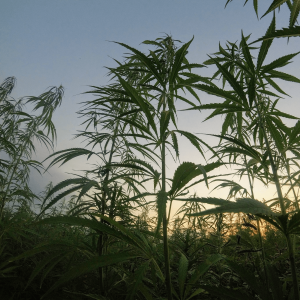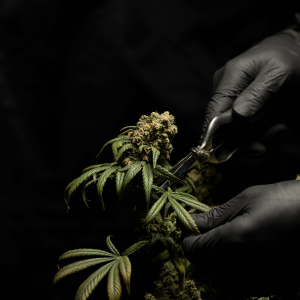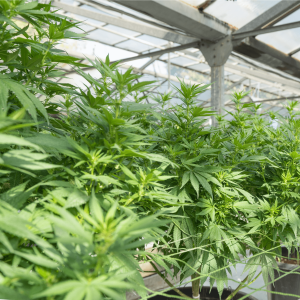Year after year, hopeful cultivators search the depths of the internet to discover how to get a cultivation license in California.
They undergo hours of searching only to make little headway while confronting the tedious task of skimming through endless documents and deciphering legal jargon.
Needless to say, acquiring a cannabis cultivation license in California is no easy feat. But as your go-to source for all things cannabis, we’re here to help.
Throughout this blog, we’re breaking down everything you need to know about getting your hands on a license and kickstarting your cannabis cultivation business. From rules and regulations to a few tips and tricks straight from industry experts, keep reading for everything you need to know.
History of Adult Use & Medical Marijuana in California
Adult-use recreational cannabis continues to thrive here in the golden state. From the Bay to LA and San Diego, Californians all across the state indulge in the legal cannabis industry.
In 2016, California residents voted in favor of legal recreational cannabis. This latest legal advancement opened the floodgates for new cannabis businesses, such as those offering weed delivery in Irvine, weed delivery in Orange County, and weed delivery in Riverside, as well as brick-and-mortar dispensaries all across the state.
But that’s not all — it helped earn California a reputation as the state with the best weed.
The Compassionate Use Act (CUA)
Prior to 2016, California was the first state to end America’s ongoing cannabis prohibition after legalizing medical marijuana for the sole purpose of medical use.
Under the Compassionate Use Act (CUA), local and state officials permitted the use of medical marijuana, despite a lack of normal FDA testing.
Since then, California’s cannabis scene has rapidly developed into what it is today — complete with legacy operators and hopeful newcomers with cultivation licenses in hand.
Recreational Cannabis Cultivator Licenses
Different commercial cannabis activity requires different forms of licensure. In regard to cannabis cultivation, a grower’s license type is determined based on two factors.
1. The type of production and lighting used.
Outdoor licenses are given to cultivators who grow cannabis outside, otherwise known as outdoor cultivation. This type of license is different from indoor licenses because cultivators who grow cannabis outdoors do so without using any artificial lighting on mature marijuana plants.
Indoor licenses are given to cultivators who grow cannabis in a permanent structure such as a grow room. Indoor licenses are defined as a cannabis cultivation operation that uses at least 25 watts of artificial light per square foot.

Mixed-light licenses are given to cultivators who grow cannabis in varied structures such as a:
- Greenhouse
- Glasshouse
- Conservatory
- Hothouse
Mixed-light licenses have two tiers based on the amount of artificial light used per square foot:
- Tier 1 – Uses up to 6 watts per square foot of artificial light
- Tier 2 – Uses 6 to 25 watts per square foot of artificial light

2. The number of plants grown or the size of the canopy.
The canopy is defined by the area where mature plants are grown. This varied classification requires further separation into the following categories:
Specialty Cottage
- Specialty cottage outdoor – Allows up to 25 mature plants or up to 2,500 square feet of canopy
- Specialty cottage indoor – Allows up to 500 square feet of canopy
- Specialty cottage mixed-light tier 1 and 2 – Allows up to 2,500 square feet of canopy
Specialty
- Specialty outdoor – Specialty outdoor allows up to 50 mature plants or up to 5,000 square feet of canopy
- Specialty indoor – Allows 501 to 5,000 square feet of canopy
- Specialty mixed-light tier 1 and 2 – Allows 2,501 to 5,000 square feet of canopy
Small
- Small outdoor – Allows 5,001 to 10,000 square feet of canopy
- Small indoor – Allows 5,001 to 10,000 square feet of canopy
- Small mixed-light tier 1 and 2 – Allows 5,001 to 10,000 square feet of canopy
Medium
- Medium outdoor – Allows 10,001 square feet to 1 acre of canopy
- Medium indoor – Allows 10,001 to 22,000 square feet of canopy
- Medium mixed-light tier 1 and 2 – Allows 10,001 to 22,000 square feet of canopy
Large
- Large outdoor – Allows more than 1 acre of total canopy
- Large indoor – Allows more than 22,000 square feet of total canopy
- Large mixed-light – Allows for a mixed-light site with more than 22,000 square feet of total canopy
Nursery
A nursery license type is given to cultivators that only grow clones, immature plants, seeds or other types of cannabis used for propagation.
Processor
A processor license type is given to cultivators that only trim, sift, cure, dry, grade, package or label cannabis.
What does it cost to become a cannabis cultivator?
Now for the question on many new cultivators’ minds: What’s the cost?
License fees ultimately depend on the type of cannabis cultivation.
For small outdoor operations, the license application fee is just $535. From there, cultivators are expected to spend $4,820 for both the license fee and any subsequent renewal license fees.

For a medium indoor growing operation, the application fee is substantially higher, totaling $8,655. With that being said, the application fee alone requires some serious funding upfront.
And we know what you’re thinking: If that’s the application fee, what are the licensing fees?
In order to obtain a cultivation license for a medium indoor operation, cultivators must pay license fees and renewal fees totaling $77,905. For more information, the DCC breaks down all application and licensing fees on their website.
Starting a cannabis cultivation business isn’t cheap and just the license fee alone must be taken into consideration when considering this as your next career move.
Cultivation License Requirements for Cannabis Businesses
And now for the true test of patience: Obtaining a cannabis cultivation license in California.
Unfortunately, there’s no simple or expedited way to obtain a commercial cannabis cultivation license, and the licensing process can be long and tedious.
The California Department of Cannabis Control (DCC) issues different cannabis licenses based solely on the type of activity your cannabis business performs. For example, the DCC issues licenses for cannabis events, retail, testing services, manufacturing, distribution, and our topic of discussion today — cultivation.
Note that different cannabis activities not only require different licenses, but they come with different sets of laws. For example, weed delivery laws in California vary greatly from cannabis cultivation laws.
Once you’ve established your operational niche—cultivation, for example—it’s crucial to prepare for the application process by making sure you have the following:
1. Proof of permission to operate from your local jurisdiction.
While recreational cannabis is legal in the state of California, not all local government officials allow for commercial cannabis activity. Make sure to obtain local approval before applying for a commercial cannabis cultivation license.
Additionally, be sure to start your cannabis business in an area where it’s legal by completing any local permitting requirements prior to applying for a state license.
2. Proof of legal occupation on the property you plan to grow cannabis.
Do you own the property in which you plan to grow cannabis? Or do you rent from a landlord? Either way, it’s imperative that you’re prepared with proof that you’re legally allowed to grow cannabis at that particular property site.
The DCC created an optional Landowner Approval Consent Form to assist with this step.
3. A description of your cannabis business’s operating procedures.
And make it detailed!
The California Department of Cannabis Control needs a clear understanding of how you intend to operate your cannabis business in order to issue the correct cultivation license or cultivation license.
4. Proof of fingerprint submission to the Department of Justice.
In order to obtain a cultivation license in California, the DCC must ensure a clean background check, which leads us to our next point…
5. A record clear of applicable past convictions.
Prior criminal prosecution involving drugs, violence, fraud, deceit, or any other related offense impacts your ability to obtain a cultivation license.
Be sure to have a clear understanding of your criminal record before entering the cannabis business.
6. Proof of ‘agricultural employer’ registration.
And finally, each cannabis cultivation business must register as an ‘agricultural employer’ in order to remain compliant with California state labor laws.
How to get a cultivation license in California
The cannabis industry happens to be full of startups hoping to obtain a cultivation license in California. Unfortunately, not all businesses will succeed — often due to a lack of careful planning and preparation.
As the saying goes, failing to plan is planning to fail. Any successfully grow op begins with a plan, so keep reading for our successful approach to obtaining a cannabis cultivation license.
1. Create a Cannabis Business Strategy & Vision Plan
Behind every well-executed business in the cannabis industry is a strategy and vision for how to succeed.
Before diving into the rules, regulations, and political challenges associated with growing cannabis, it’s imperative that you understand your ‘why.’
Why do you want to establish a cultivation operation on a larger scale? And how will your product stand out from the competition?

It’s no secret that the cannabis industry is growing at a rapid pace, and only the cultivators that align their values with those of the legacy operators within the industry survive.
Once you’ve established your ‘why,’ it’s imperative that you focus on your ‘how.’ An effective business plan often includes your company’s goals and objectives, product type (medicinal vs. adult-use cannabis), your ideal customer, and the current market standing.
Additionally, it’s beneficial to understand your entire supply chain and projected gross annual revenue, especially when considering our next point, location.
2. Property Acquisition & Location
Despite state regulations, local ordinances have the authority to restrict cannabis business activities. Before choosing a location and acquiring a property, whether owned or leased, it’s important to consider any rules and regulations set forth by the local government.
Once you’ve determined a location, finding a suitable property to grow cannabis is your next step.

Given that the federal government still restricts the cultivation and possession of cannabis, some landowners may be hesitant to allow large-scale cannabis cultivation on their property.
Additionally, you’ll need to consider the logistics of the property in order to determine zoning restrictions that could potentially impact your ability to obtain a cultivation license for that property. Logistics include:
- Employee commute time
- Utility accessibility
- Structures on the property, or lack thereof
- Bodies of water on the property
- General topography
- Trees
- Walkways
- Access to roadways
Once you’ve fully analyzed the data and logistics, and you’ve found a suitable property, you’ll need to obtain a Conditional Use Permit/Land Entitlement.
Water Boards Cannabis Cultivation Policy
The Water Boards Cannabis Cultivation Program spearheads environmental assessments on water quality and quantity problems that could impact growing operations.
To protect instream flows and water quality, this cannabis cultivation policy sets forth principles and requirements for marijuana agriculture activities.
The policies ensure water diversion and waste discharge from cannabis cultivation doesn’t damage the water quality and surrounding ecosystem of the area.
All cannabis cultivation companies are required to obtain coverage or a waiver from the State Water Board cannabis cultivation regulatory programs.
3. Prepare & Submit the Application Package
Once you’ve established your cannabis business plan and obtained land, it’s time to prepare and submit the application package.
As mentioned, cultivation licenses aren’t easy to obtain. They require careful planning and preparation before state and local regulators even begin their approval process.
To submit your application package with confidence and ease, we suggest carefully reviewing the Department of Cannabis Control’s application checklist.
Not only does this checklist offer a step-by-step guide to working through the application process, but it provides you with some peace of mind knowing you’re preparing for operation fully aligned with the DCC’s terms.
Once you’ve diligently prepared and ensured that everything is in place, you may submit your application package.
4. Local Approval Process
The next step is to obtain a conditional use permit. A CUP grants special use of land that’s not automatically permitted by zoning and land use ordinances.
Obtaining a CUP requires you to present your plan at a public hearing, and approval or denial is to be decided from a vote amongst city council members.
The legal cannabis industry is still in its infancy, so local and state regulators rightfully worry about both recreational and medical marijuana cultivation operations. In this stage, it’s important to not only sell your business to government officials but sell yourself as a knowledgeable cultivator and asset to the community.
Local approvals often take some time due to the various permits, cannabis licenses, and certifications required from other local departments and state agencies.
This process also often requires additional funding invested towards environmental precautions if the city or county deems your grow operation a threat to the environment.
5. Maintain Permits and Cannabis Licenses (mention price points here)
Congrats! If you’ve made it to this step, then you’ve successfully obtained all required permits and cultivation licenses. However, your journey in the cannabis cultivation world has only just begun.
Cannabis laws are constantly changing within the industry. From state regulations to city ordinances, and everything in between, staying up to date is your key to long-term success.
In order to do so, we suggest reviewing the ongoing regulations on a regular basis. Such regulations include the use of generators, various license requirements, water permits, pesticide regulation, and a slew of other rules set forth by the DCC.
In general, learning how to get a cultivation license in California is just the first step. Once you’ve completed the licensing process and obtained a license, you’re free to follow your cannabis cultivation dreams — within county limits, of course.
FAQ
1. How long does it take to get a cultivation license in California?
The time it takes to get a cultivation license in California varies widely depending on factors both within and outside of the cultivator’s control. In order to expedite the process on your end, we suggest ensuring that you’ve compiled all of the necessary information and paperwork before submitting your application.
2. Can I sell my cannabis products to dispensaries with a cultivation license in California?
No, cultivators are legally unable to sell directly to consumers. Selling cannabis to consumers requires a retail license, which is a separate application and approval process.
3. What are the consequences of operating without a cultivation license in California?
Operating without a cultivation license is punishable by a fine of $100 for adults between the ages of 18 and 20 growing between 1 and 6 plants illegally. However, for adults 21 and over, growing more than 6 plants is a misdemeanor charge punishable by 6 months in jail and/or a $500 fine.
4. Are there any taxes associated with obtaining a cultivation license in California?
Tax rates for cannabis cultivation recently changed as of January 1, 2022. In order to keep up to date on all cultivation tax laws in California, we suggest checking in with the California Department of Tax and Fee Administration.
5. What is the difference between a temporary and an annual cultivation license in California?
Temporary licenses are only valid for 120 days, whereas annual licenses are valid for 365 days and require yearly renewal.

 Rewards
Rewards





